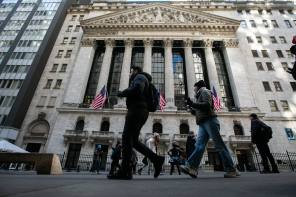
The fall in the Vix index – which is seen as a barometer of investor sentiment – to a seven-year low of below 11 in early June has focused minds again on the catalysts that might unleash new waves of turbulence into the world’s equity markets.
The Chicago Board Options Exchange Volatility index, or Vix, measures traders’ expectations for price swings of stocks included in the S&P 500 index.
Known as Wall Street’s ‘fear gauge’, the Vix tends to spike upwards at times of falling markets, with the exception of commodities’ markets. The extremely low level of the Vix currently reflects the positive mood of US investors. Taken as a reflection of sentiment globally, it implies little perceived risk in global equity markets. Volatility measures in bond and currency markets have also fallen to low levels.
The question of whether equity investors are justifiably optimistic or dangerously complacent is a moot point for fund managers and strategists.
Reasons to be cheerful include the pick-up in economic growth and the continuing supportive stance of the Federal Reserve and other central banks towards markets. This month the European Central Bank took action to keep deflation at bay, including cutting a key interest rate below zero.
Jake Robbins, a global equities fund manager at Premier Asset Management, says: “The world is awash with money. This has led to equities rising and bond yields falling. As a result, volatility has fallen and risk is priced very cheaply.”
Mr Robbins draws a comparison with the last bull market.
“The big danger is that in reality people are running far higher, riskier positions than would be suggested by such low volatility,” he explains.
“In 2007 volatility was so low that people couldn’t see what could end the bull market.”
Few predicted beforehand that it would be US housing that sparked the global meltdown. In this type of scenario, warned Mr Robbins, “risk builds up in the financial system to such a level that something relatively minor triggers a downturn and [then] there’s a snowball effect”.
Ryan Hughes, multi-manager at Apollo Multi Asset Managers, admits to nervousness over the length of time the Vix has been low.
“That’s become a comfort for a lot of investors, making them happy to remain heavily invested in equities,” he outlines.
Frances Hudson, global thematic strategist, claims when “everyone is positioned one way, we think the turning point must be coming sooner or later”.
Mr Hughes cautioned that an extended period of low volatility could end with a bang, with volatility spiking sharply, leading to painful consequences for equity markets. He expects volatility and turbulence to return at some point: “The questions for investors are: what will be the catalyst and when will that be?”
Mr Hughes puts China at the top of his list of risk factors for equity markets.
He thinks markets might not react if China’s growth data comes in at slightly below its target of 7.5 per cent. But he warns: “If China’s growth comes in under 7 per cent, that could easily be enough to surprise and disappoint the markets, leading to an uptick in volatility.”
Aside from slowing growth, China has an unknown amount of bad debt piled up from bank lending to projects encouraged by the Chinese government during the financial crisis.
However, Premier’s Mr Robbins doubted this could be the trigger for a rise in volatility and a global crisis.
“The Chinese government has the fire power to bail out the Chinese banking system,” he says.
Ms Hudson too pointed to a growth shock out of China as a risk factor, or indeed out of the US, where she highlighted the sustainability of the housing market as a potential issue.
“The withdrawal of liquidity of any kind can be a market event,” she said.
“This could be triggered by a realisation by investors of trends already happening, such as lacklustre profits growth and company investment.”
However, as an active investor, Ms Hudson is not particularly nervous because correlations between risky assets have fallen, providing “long-term fundamental investors more potential for adding value through proper analysis”.
Mr Robbins, however, finds it hard to identify a catalyst that could “fundamentally rattle” the markets at the moment.
The re-emergence of inflation would be a problem for markets, but this seems “extremely unlikely in the short term”, he says.
On the contrary, some countries in Europe, such as Spain, are dealing with deflation.
The Ukraine/Russia situation and the Syria crisis might have been expected to have caused stress to global markets, yet they have had little effect. “The market is willing to discount any exogenous event,” observes Mr Robbins.
“While central banks continue to pump liquidity into the market, low volatility could last for a very long time until a negative catalyst comes along to shake it up,” he adds.
So what could be the catalyst for volatility to rise? “An unknown unknown,” he counters.
“But the problem is the longer volatility remains low, the more risk is building up in the financial system and the more painful and sharper it will be when it unwinds,” explains Mr Robbins.
“It feels eerily similar to 2007 in some ways – we will see.”



